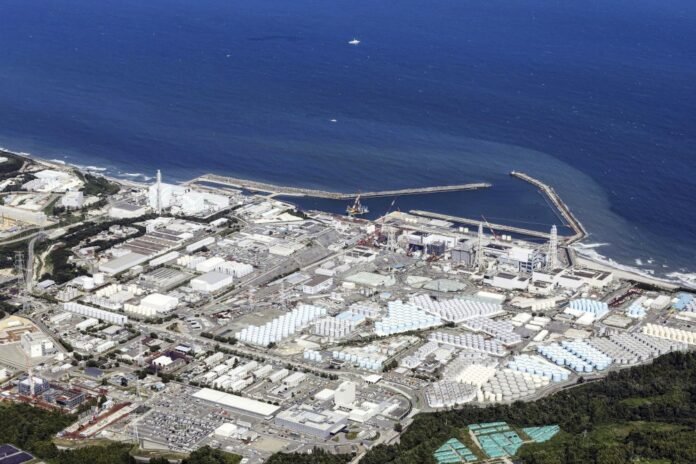The process is organized as follows. First, the water is purified of radionuclides, with the exception of tritium, after which it is diluted with seawater until the tritium concentration reaches a low level. After that, the water, bypassing various reservoirs, enters the ocean through an underground pipeline at a distance of about a kilometer from the coast. At this location, the Tokyo Power Station Operator (TEPCO) will monitor tritium levels in the water for a month.
The country’s authorities assure that the situation is under control and that the water spill will not harm the environment or people. To reinforce its point of view, the Japanese government refers to the conclusion of the experts of the International Atomic Energy Agency (IAEA). The head of this structure, Rafael Grossi, also affirms that “the unloading is carried out according to plan and complies with safety regulations.” On the eve of the procedure, the agency’s representatives took the necessary measures and came to the conclusion that the water from Fukushima-1 does not threaten flora and fauna.
But even in Japan itself, many criticize its cabinet’s actions to drain water from nuclear power plants into the ocean. This is demonstrated by the protest action that took place the day before at the headquarters of the TERSO company. The protesters are not satisfied with the fact that such a decision was made without obtaining public consent. Among the slogans of the protesters were calls not to pollute the ocean. A similar position is held by Japanese fishermen, who are concerned about the state of their industry. “Our stance against the spill hasn’t changed at all,” said Masanobu Sakamoto, president of the National Federation of Fisheries Cooperative Associations.
Moscow hopes that the Japanese authorities will provide the States concerned with all the necessary information about the discharge of water from Fukushima-1 into the ocean. This, in particular, was repeatedly said by the official representative of the Russian Foreign Ministry Maria Zakharova. China has harshly condemned Japan for dumping water into the ocean and called on Tokyo to immediately stop this procedure. The People’s Republic of China believes that Japan has indeed committed a crime against humanity whose consequences will be catastrophic. In response, Beijing has suspended imports of Japanese seafood into its territory from August 24.
Japan’s plans have been known for a long time and were not a surprise, but questions about where the tritium can go and whether it is dangerous cause much controversy.
– Our laboratory gained experience in monitoring spills from nuclear power plants on the days when the accident occurred. Fukushima-1 is the east coast of Japan. We look at where and how the waters dumped there are transported: first by the Kuroshio current, and then through the North Pacific to the shores of North America, then a twist and a return, Vasily Kachur, senior software engineer at the monitoring lab by satellite. of the Institute of Automation and Processes, the Administration of the Far Eastern Branch of the Russian Academy of Sciences told RG. They will follow the same path today. But there is always the possibility of “shunts” to the south of the Kuril Islands. Some of the radioactive waste can be taken there.
The probability of the “atomic” fish reaching the shelves is low, say the scientists. But more control is needed when fishing for fish and squid.
According to him, from the date of the drainage, the laboratory staff can, using satellite data, track exactly where the water went and whether there is a “slide” to the Kuril Islands. The water will reach the shores of North America already in a highly diluted state.
– The distances in the ocean are great – emphasizes the scientist. – Naturally, water can “disperse” very quickly and then its radiation background will not be higher than the natural one.
What if it doesn’t go very fast? The Sakhalin branch of VNIRO ensures that the feeding and wintering migration areas of Asian pink salmon are north of the main area of possible spread of the radioactive slick. That is, the probability that “atomic” fish will reach our table is small.
On the other hand, the east coast of Japan is a spawning ground for the saury. If the radiation background remains at a high level for a long time, a population “enriched” with some form of tritium can theoretically be obtained. After the accident at the nuclear power plant, it was the saury that caused alarm among scientists. But in 2011-2013, employees of the TINRO Center organized special monitoring during the fishing period in the South Kuril Islands region and determined that the level of radiation contamination of the caught fish was low.
“This indicates a relatively low probability of infection of this type of fish today. And although, on the one hand, this does not cause panic, on the other hand, it is obvious: Rospotrebnadzor should tighten control over the level of infection of saury and other species of fish caught by Russian fishermen and squid, whose migratory routes cross the water zone of probable spread of radioactive water,” he summarized in SakhNIRO.
Since 2011, accredited Primorye laboratories have been monitoring compliance with radiation safety requirements of fishery products. But now the Rospotrebnadzor department in Primorsky Krai has tightened control over products from Japan.
– During the controls, 22 samples of fishery products were sent for examination and 44 tests for the content of radioactive substances were carried out. All samples meet the mandatory requirements, – told RG Olga Shornikova, head of the food hygiene department.

